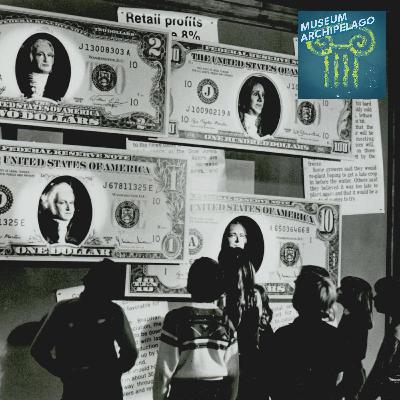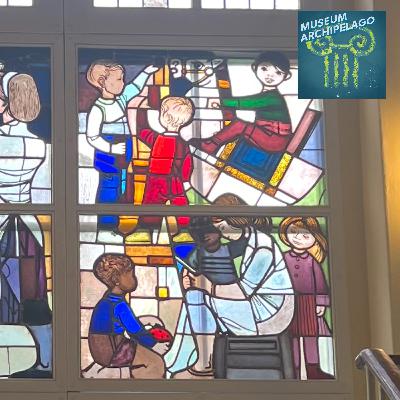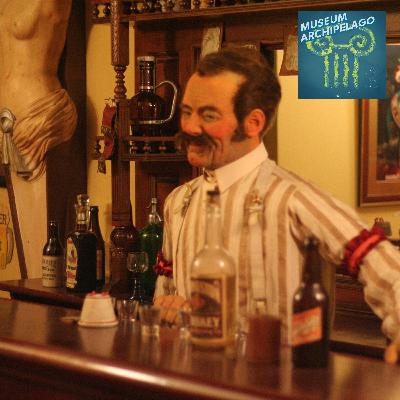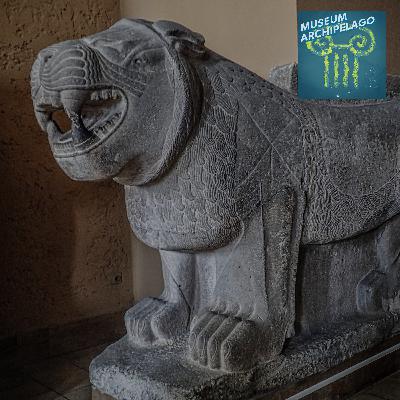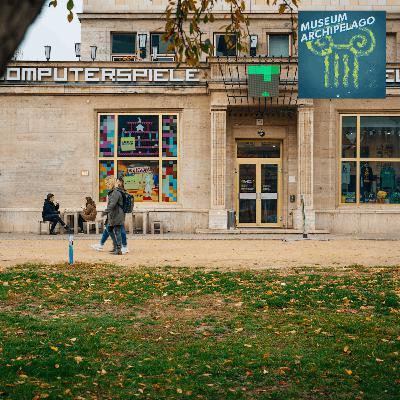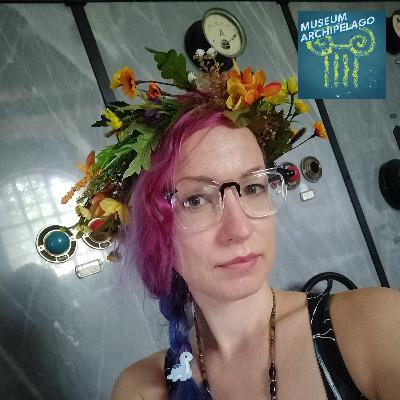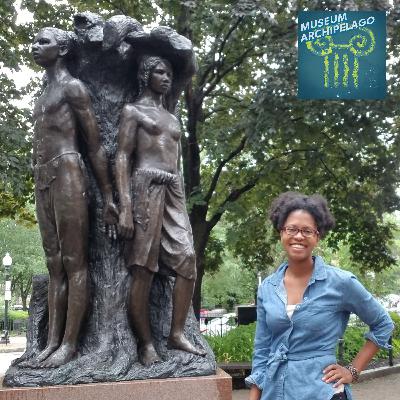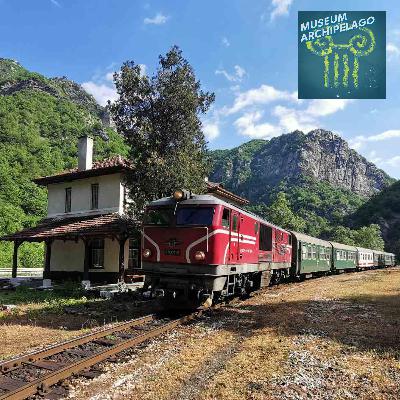92. The Pleven Panorama Museum Transports Visitors Through Time, But Not Space
Description
The Pleven Panorama transports visitors through time, but not space. The huge, hand-painted panorama features the decisive battles of the Russian-Turkish War of 1877–78, fought at this exact spot, which led to Bulgaria’s Liberation. The landscape of Pleven, Bulgaria depicted is exactly what you see outside the building, making it seem like you’re witnessing the battle on an observation point.
Bogomil Stoev is a historian at the Pleven Panorama, which opened in 1977. The opening was timed to celebrate the 100th anniversary of the Ottoman Empire’s surrender following the battles and the siege of Pleven. The building itself is etched with the story of the siege and the battles, and because the landscape is filled with the remains of the combattants, this was the only structure allowed to be built on the spot.
In this episode, Stoev describes how the creators of the Pleven Panorama learned from previous panoramas, how the museum contextualizes the history of Bulgaria’s Liberation, and how this museum has become a symbol of the city of Pleven.
Topics and Notes
- 00:00 Intro
- 00:15 Skobelev Park and the Remains of the Dead
- 01:06 Bogomil Stoev, Historian at the Pleven Panorama
- 01:36 Our Story Begins in the 14th Century
- 01:58 April Uprising
- 02:40 The Start of the Russian-Turkish War of 1877–78
- 03:10 The Pleven Panorama
- 05:16 General Skobelev
- 06:00 General Totleben
- 06:10 The Siege of Pleven
- 07:00 December 10th, 1977
- 07:40 Episodes 47 and 54 of Museum Archipelago
- 08:07 Building the Museum
- 08:46 A Brief History of Panoramas
- 10:15 Pleven’s Enduring Symbol
- 11:20 Outro | Join Club Archipelago 🏖
Museum Archipelago is a tiny show guiding you through the rocky landscape of museums. Subscribe to the podcast via Apple Podcasts, Google Podcasts, Overcast, Spotify, or even email to never miss an episode.
Unlock Club Archipelago 🏖️
- Access to a private podcast that guides you further behind the scenes of museums. Hear interviews, observations, and reviews that don’t make it into the main show;
- Archipelago at the Movies 🎟️, a bonus bad-movie podcast exclusively featuring movies that take place at museums;
- Logo stickers, pins and other extras, mailed straight to your door;
- A warm feeling knowing you’re supporting the podcast.
Transcript
Below is a transcript of Museum Archipelago episode 92. Museum Archipelago is produced for the ear, and only the audio of the episode is canonical. For more information on the people and ideas in the episode, refer to the links above.
<input class="toggle" id="collapsible" type="checkbox" />
<label class="lbl-toggle" for="collapsible">View Transcript</label>
Skobelev Park just South of the Bulgarian city of Pleven looks like a typical Bulgarian park. A pleasant place to sit on a bench, walk around with friends, and enjoy the day.
Which it is.
But to the people of Pleven, the area has another name. It's known as the Valley of Death, the site of the decisive battle of the Russo-Turkish War of 1877-78, which ultimately led to Bulgaria's liberation from the Ottoman Empire after 500 years.
Bogomil Stoev: Around 70, 80 thousand people, they died here and their remainings, they are here. They were not buried in the cemetery. They were using the trenches and they would put the bodies and just put mud on them. So here we cannot dig. You cannot do anything, any kind constructions and this is why when they built the museum in 1977, we are the only structure here.
This is Bogomil Stoev, a historian at the Pleven Panorama museum — the only structure in Skobelev Park.
Bogomil Stoev: Hello, my name is Bogomil Stoev. I'm a historian and I work in the museum Panorama Pleven and this is actually my job to work with visitors, to show the fights and the history of our city, city of Pleven. This was the main place of the fights that actually liberated Bulgaria and Bulgaria exists at this day because of this war and this fight.
Story of this war and this fight actually begins in the late 14th century when the Ottoman Empire conquered the land controlled by the Second Bulgarian Empire, leading to the long period of Ottoman rule.
Bogomil Stoev: [For] 500 years we didn't exist like a country. We were not existing as a country, only as a nation. And after this war, Bulgaria was again on the map of Europe after 500 years.
By the 19th century, Bulgarian nationalism started to take hold, culminating in the April Uprising in 1876. Bulgrians rebelled in towns and cities across the territory against the Ottomans. The Ottoman Empire's response to the insurrection — a violent suppression by massacring civilians — led to an outpouring of public support for the Bulgarian cause.
Bogomil Stoev: Koprivshtitsa and Panagyurishte, those are the main places for the uprising. This is actually the punishment for the Bulgarian people because they made the uprising. 30,000 innocent people were killed this was a big news around the world.
The coverage of the Ottoman's suppression was one of the factors that led the Russian Empire to declare war on the Ottoman Empire.
Bogomil Stoev: And one year after the rebellion on 24th of April in 1877, Alexander II, the Russian emperor, he declared the war. And this is the beginning of maybe [the] 10th, 12th war between the Russian and Ottoman Empire, but in our history, in Bulgarian history, it stayed as a war for liberation.
All of this context is briefly presented in the first gallery of the Pleven Panorama — as visitors walk up the stairs to the main attraction: the Panorama itself.
Bogomil Stoev: And this is the main part of the museum actually.
Wow.
Bogomil Stoev: So this part of the museum, it's actually the unique part. The name of the museum is because of this part here: Panorama. The name starts in Greek. It means, looking around yourself and the idea is that when you go in a museum like this, you can see actually the real place.
The Panorama is huge: one unbroken cylinder of painted canvas wrapping all the way around the room.
Bogomil Stoev: It was hand- made. This is on canvas. It's one big piece. It's 115 meters long and it's 15 meters high. 15 meters here in Bulgaria are like four floors of a building. 13 painters did everything here in four months.
Everything in the room — the lights, the atmosphere creates the illusion that you're standing at this location in the afternoon of September 11th, 1877. It's as if the canvas is a window — the mountains in the distance, the rolling hills in the foreground are all exactly what you would see if there were actual windows in the building.
Bogomil Stoev: And the idea of this part here, or the museum is actually to show you the fight for the place that you're sitting right now. We will go on the roof of the museum: this is the view. This is not a place somewhere around the city. This is exactly the place we are right now.
The focus on the exact location mirrors Pleven's geographic destiny — this was the only place for Russian troops and their Romainain allies to enter the territory because their access to the Black Sea was blocked due to the Crimean War. The trade routes and the paths over the mountains were such that whoever controlled Pleven could control access to southern Bulgaria and Istanbul.
So this is where the Ottoman Empire tried to stall the invaders' progress. And it almost worked.
September 11th, 1877 was the third attack on the Ottoman defensive positions. On the canvas, Russian troops — under the command of General Skobelev— stream towards you in two m




